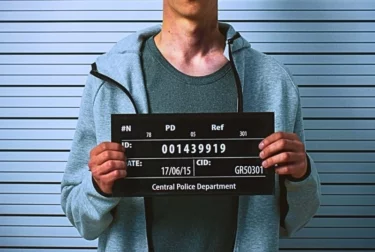A person can use deadly force as a last option in an imminent threat of severe bodily injury or harm. The state gives a person the right to use lethal force, such as shooting an aggressor, to stop a felony from taking place in his or her home. A person facing a threat of immediate bodily injury or harm can use reasonable force for self-defense. Self-defense laws vary from state to state.

Some states follow “Stand Your Ground” laws that allow the victim to use deadly force without reasonably attempting to retreat from the attacker first. There is no Minnesota stand your ground law. Instead, Minnesota enforces a “duty to retreat” that calls for a person to back down from a fight or confrontation.
Other states have the “Castle Doctrine” laws that call for the victim to retreat from an attacker unless the attacker forcibly enters his or her home. While Minnesota doesn’t explicitly impose castle laws, it acknowledges certain principles of the doctrine.
Table of Contents
What Is Self-Defense in Minnesota?
Minnesota law describes self-defense as using a reasonable level of force to prevent a threat of immediate bodily harm or injury. For a person to use self-defense, the following key elements must be satisfied:
- The defendant did not initiate the aggression or provocation;
- The defendant had a fear of the immediate threat of severe bodily injury or harm;
- The defendant’s fear was reasonable;
- The defendant lacked a reasonable opportunity to retreat or otherwise avoid the threat.
Upon satisfying these elements, the defendant must use a reasonable level of force to get out of the situation. The Minnesota self-defense statute frequently uses the word “reasonable.” This word expands the scope of interpretation in each self-defense case. Different situations may require a different reasonable degree of force.
Self-Defense and Assault
It’s important for defendants to understand the difference between assault and self-defense in Minnesota. While the law allows a person to use reasonable force to stop an assault, it also requires the person to halt defensive activities immediately after an imminent threat has been removed.
If an aggressor with a weapon, such as a gun or a knife, is disarmed or injured to the extent the aggressor cannot use the weapon, the victim must stop defensive activities. Minnesota courts deem actions past this point as either an aggravated or simple assault, not self-defense.
An aggravated assault refers to the intent to inflict physical harm or injury using a lethal weapon like a knife, baseball bat, gun, motor vehicle, or flammable substance. A simple assault refers to the act of intentionally causing physical harm or injury, attempting to cause physical harm, or acting in a manner that triggers fear of physical harm to another person.
Protection of Self and Others through Self-Defense
Most self-defense situations involve a victim attempting to protect himself or herself from an attacker who poses imminent threats of danger or severe bodily injury. In some circumstances, threats of violence or assault may target a loved one or family member. In these situations, self-defense transforms into a defense of others.
A person can protect others from violence, abuse, or harm by handling the attacker in whatever way necessary based on the situation. The person should consider the amount of force necessary for the situation.
Proving Self-Defense in Minnesota
Minnesota has a strict criterion on the use of force in self-defense. A person who cannot satisfy the criterion of self-defense as set by Minnesota law may face conviction for crimes such as assault and murder. To prove self-defense, the defendant must demonstrate the following elements beyond a reasonable doubt:
There Was No Aggression or Provocation by the Defendant
A self-defense claim will be unsuccessful if the defendant provoked the other party or initiated the attack. This defense would work only if the defendant was the reluctant participant in the confrontation. Witness statements and videos of the incident can help the defendant demonstrate this element.
There Was an Immediate Threat of Great Bodily Injury or Harm
Minnesota law allows people to use force to defend themselves when there is an imminent threat. A verbal threat can justify the use of force, provided it imposes an imminent fear of physical harm or injury on the targeted victim. A verbal threat without an accompanying danger of immediate bodily harm does not validate the use of force in self-defense. As mentioned earlier, justification for using force in self-defense ends immediately after threat elimination.
The Fear Was Reasonable
The defendant must demonstrate that the fear of physical harm was justifiable for the self-defense claim to work. A self-defense claim, for instance, isn’t viable in a situation where the defendant was unlikely to suffer physical harm.
There Was No Reasonable Opportunity to Retreat
The defendant must justify using reasonable force as self-defense by demonstrating that he or she lacked a reasonable or safe opportunity to retreat. This is especially true if the attack happened outside the defendant’s home. Surveillance camera footage can be instrumental in proving this element of self-defense.
Limitations of A Self-Defense Claim
A self-defense claim has three limitations. First, a judge or jury must see the use of force in self-defense as reasonable. Second, the victim can employ only the amount of force required to stop the attack or prevent bodily harm. Third, the amount of force employed must match the level of danger in question.
Duty to Retreat in Minnesota
In Minnesota, a person must retreat before using force or otherwise acting in self-defense outside his or her home. In the event of a threat of physical harm or injury, the person must reasonably try to retreat or escape to a safe place. Duty to retreat includes any effort to scale down or prevent a physical confrontation.
If the person cannot safely retreat, the person may then use force or take defensive action. The person can use lethal force only as a last option. If a person uses deadly force in self-defense when there was a possibility of retreat, then the person may face criminal charges, such as murder and assault.
Stand-Your-Ground Laws
States with Stand-Your-Ground laws do not impose the duty to retreat. Instead, they allow a person to use force, including lethal force, without first trying to escape from the dangerous situation. Minnesota Stand Your Ground law does not exist. In Minnesota, a person must first attempt to retreat from an imminent threat before using force.
Castle Doctrine in Minnesota Self-Defense Cases
While Minnesota is not a stand-your-ground state, it imposes certain castle doctrine principles. This doctrine eliminates the duty to retreat if an individual is facing an imminent threat of harm in his or her home.
In Minnesota, a person may, in certain situations, use lethal force in self-defense when faced with an immediate threat of physical harm in the home. The victim may, for instance, use a stun gun to incapacitate the attacker temporarily. The use of this legal self-defense weapon in a scenario that does not justify lethal force may amount to a stun gun crime in Minnesota.
Involving an Attorney in a Self-Defense Case in Minnesota
A person facing criminal charges or was in a violent confrontation should involve an aggressive criminal defense attorney from the beginning of the case. An attorney who understands Minnesota self-defense laws and the criminal justice system can investigate the case and determine whether the defendant has a viable self-defense claim.
The attorney will ensure the defendant has satisfied all the necessary legal requirements and offered enough evidence to support the self-defense claim. The attorney can also convince the judge or jury to drop the charges based on a lack of evidence. Working with a criminal defense attorney from the start will improve the odds of the defendant proving the self-defense claim and winning the case.






